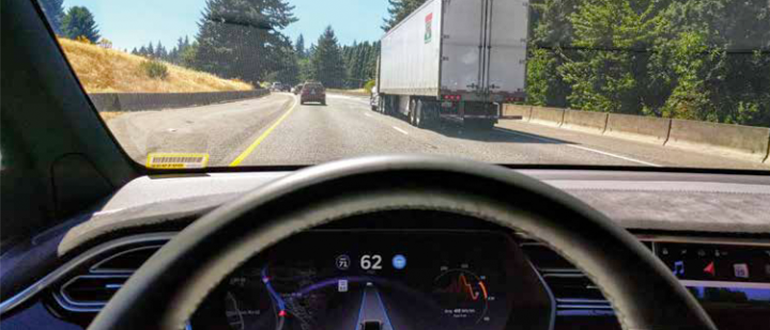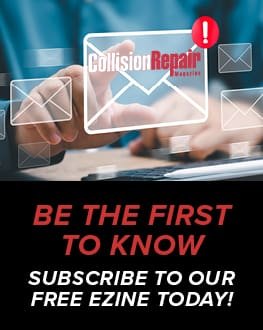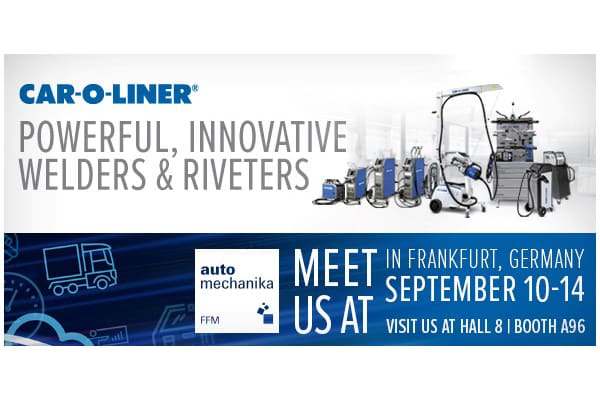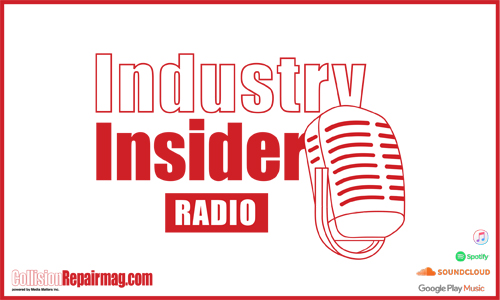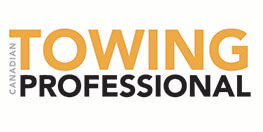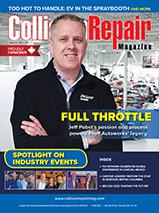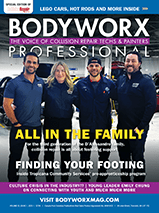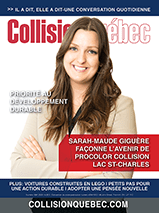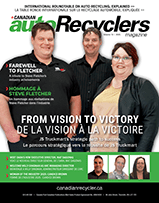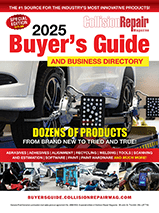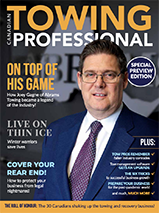By Howard Berg
ADAS stands for advanced driver assistance systems. It refers to any electronic system that assists the driver while driving and is intended to improve vehicle safety.
It is estimated that nearly 40 percent of the new vehicles sold in Canada today have some sort of ADAS technology built into them. It is projected that figure could jump to more than 50 percent by 2023.
This technology is designed to work together with other systems to automate the vehicle while enhancing its safety. This is done by warning the driver of potential issues and ultimately avoid collisions.
Adaptive systems are ones that adapt vehicle settings based on input from the surrounding environment.
Automated systems take over certain functions that the driver cannot do safely.
Monitoring systems use sensors, cameras, or other means to observe the surrounding area or driving of the vehicle and assess whether a correction needs to be made.
ADAS TECHNOLOGY FALLS INTO FOUR CATEGORIES:
1.Adaptive: Systems that change/adapt based on input from the surrounding environment
2. Automated: Systems that take over and perform certain functions that the driver cannot do safely
3.Monitoring: Systems that use sensors, cameras, or other means to observe the surrounding area or driving of the vehicle and assesses whether a correction needs to be made
4. Warning: Systems that alert the driver to potential issues in their own driving or the driving of others that could increase the risk of injury to those in the vehicle
Warning systems alert the driver to potential issues in their own driving or the driving of others that could increase the risk of injury to those in the vehicle.
ADAS technology allows the systems in the vehicle to function properly and is built into a vehicle’s windshield. This technology will require more rigorous standards and qualifications for auto glass technicians.
Replacing a broken windshield is not as simple as replacing the glass—some ADAS windshields have modules or cameras built into them that need to be calibrated in order to function properly.
Many features of ADAS are designed to capture external information through the windshields, allowing the vehicle’s computer to quickly analyze and efficiently provide the necessary action.
The technology requires the automotive glass to meet or exceed the requirements in order to not reduce, distort or impede the signal, which ultimately may cause the vehicle to react incorrectly.
As a result, automotive glass manufacturers must meet the requirements for the ADAS systems. These requirements include choosing the right raw materials, investing in product engineering, and setting up the proper quality inspection standards for production.
Every car manufacturer has its own specifications for ADAS calibration. These differences range from manufacturer to manufacturer, and in many instances, the same manufacturer will have differences from model to model. Only trust manufacturers who have the proven experience to produce the original specifications of auto glazing, which enable the ADAS system to be recalibrated. Precise calibration ensures correct pitch, yaw and roll of the camera.
Ultimately, access to the ADAS requirements and glass specifications is key to making consistent ADAS glass. Different car manufacturers have different approaches to specific ADAS designs for their specific models.
ADAS sensors or cameras are most commonly mounted on the glass. Once a windshield has been replaced, the position of the sensor or camera has ultimately changed—even the slightest shift will cause the need for calibration. Recalibrating the camera or sensor after the replacement of the windshield is therefore necessary—whether or not OEM glass has been installed.
In order to re-calibrate the ADAS windshields, special training, equipment and expertise are required. There are three types of calibrations: static, dynamic and a combination of the two.
SOME EXAMPLES OF SPECIFIC ADAS SYSTEMS:
• Adaptive cruise control (ACC)• Adaptive high beam
• Glare-free high beam
• Adaptive light control; swivelling curve lights
• Automatic parking
• Automotive navigation system providing up-to-date traffic information.
• Automotive night vision
• Blindspot monitor
• Collision avoidance system
• Crosswind stabilization
• Driver drowsiness detection
• Driver Monitoring System
• Electric vehicle warning sounds used in hybrids and plug-in electric vehicles
• Emergency driver assistant
• Forward Collision Warning
• Intersection assistant
• Hill descent control
• Intelligent speed adaptation or intelligent speed advice (ISA)
• Lane departure warning system
• Lane change assistance
• Pedestrian protection system
• Traffic sign recognition
• Turning assistant
• Vehicular communication systems
• Wrong way driving warning
STATIC CALIBRATION
This type of calibration is performed in a shop with specialized calibration tools like electronic devices and laser targets specific to each model. Each vehicle manufacturer requires different target boards and specific predetermined standards set by the vehicle manufacturer.
Examples of some requirements for static calibration are:
• Clean and level floor with minimum 10-metre depth from the rear bumper to the target board
• Walls and floors cannot be black or white and cannot be a checkerboard pattern
• Walls must be free of posters
• Technician’s clothing cannot be black or white, as it may interfere with the calibration process
• Proper lighting
DYNAMIC CALIBRATION
Dynamic calibration is done with a handheld device connected directly to the vehicle’s computer through the vehicle’s OBD ll port. Once this is done, the vehicle will need to be driven at a designated constant speed over a prescribed distance in proper weather conditions.
Additionally, all lines on the road must be clearly visible. This allows the vehicle to be put into ‘learning mode,’ where it may use reliable benchmarks to use as driving aids, allowing the advanced driver assistance systems to become familiar and accustomed to certain road features.
COMBINATION CALIBRATION
Some vehicle manufacturers require both static and dynamic calibrations.
These calibration tools help to duplicate the manufacturer’s settings, ensuring your vehicle maintains the safety features it originally came with. So, when should calibrations be performed?
• When a windshield has been replaced
• When the ADAS camera has been disconnected
• When the camera is removed partially or develops a fault
• After a wheel alignment or changes with the suspension
All of the above factors may seriously affect how well your ADAS works if it is not calibrated properly.
What are some things that can negatively affect the calibration process, causing it to fail?
• Not having a full tank of fuel.
• Having cargo in the trunk or the back seat.
• Not having a proper wheel alignment.
• Not having the windshield installed properly. Items that may potentially affect the dynamic calibration process:
• Not having proper weather conditions
• Not having proper signage and painted lines on the road.
• Not maintaining the speed required to perform the dynamic calibration.
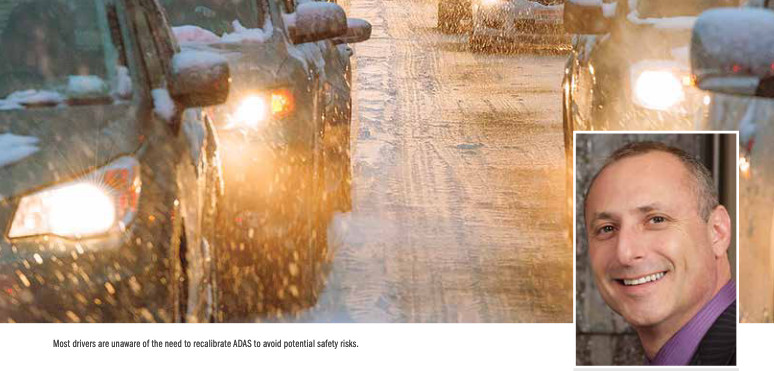
NOTE
Most North American drivers are not aware of the need to recalibrate the ADAS systems to avoid potential safety risks.
Nevertheless, when an ADAS windshield is replaced, the cameras must be recalibrated. Recalibration is an absolutely critical process that ensures the driver and passengers’ safety.
Every car manufacturer has its own specifications for ADAS calibration. These differences range from manufacturer to manufacturer, and in many instances, the same manufacturer will have differences from model to model.
Therefore, only trusted manufacturers, who have the proven experience, can produce the original specifications of auto glazing which enables the ADAS system to be recalibrated. Precise calibration ensures correct pitch, yaw and roll of the camera angle.
Howard Berg has been involved in the auto parts industry since 1992, specializing in auto glass since 2012. He is now serving as the regional sales manager—Canada at Fuyao North America Inc. He can be reached at hberg@fuyaogroup.com.


